Objective:
- Examine the impact of drought and aridity on global internal migration flow using a census-based migration datasets
Case:
Methodology:
- international flow
- migration rate
- Indicator:
- dryness: PET and PDSI
- water balance: SPEI
- Standardized
- Gravity-type fixed effects model
- Poisson-pseudo maximum likelihood
- Interaction
- Prediction
- Robustness
- Spatial interdependencies
- Multilateral resistance
- Second migrant data
- 10 year
- log-linear
- population-weighting
- varying time window
- varing fixed effects
- varing the standardization
- investigation the effects before census
Data Source
- IPUMSD international database
- Climate research unit
- Drought: SPEI
- GDP
Findings:
- High- and low-mobility clusters which are shaped by country-specific topographic and socio-economic characteristics
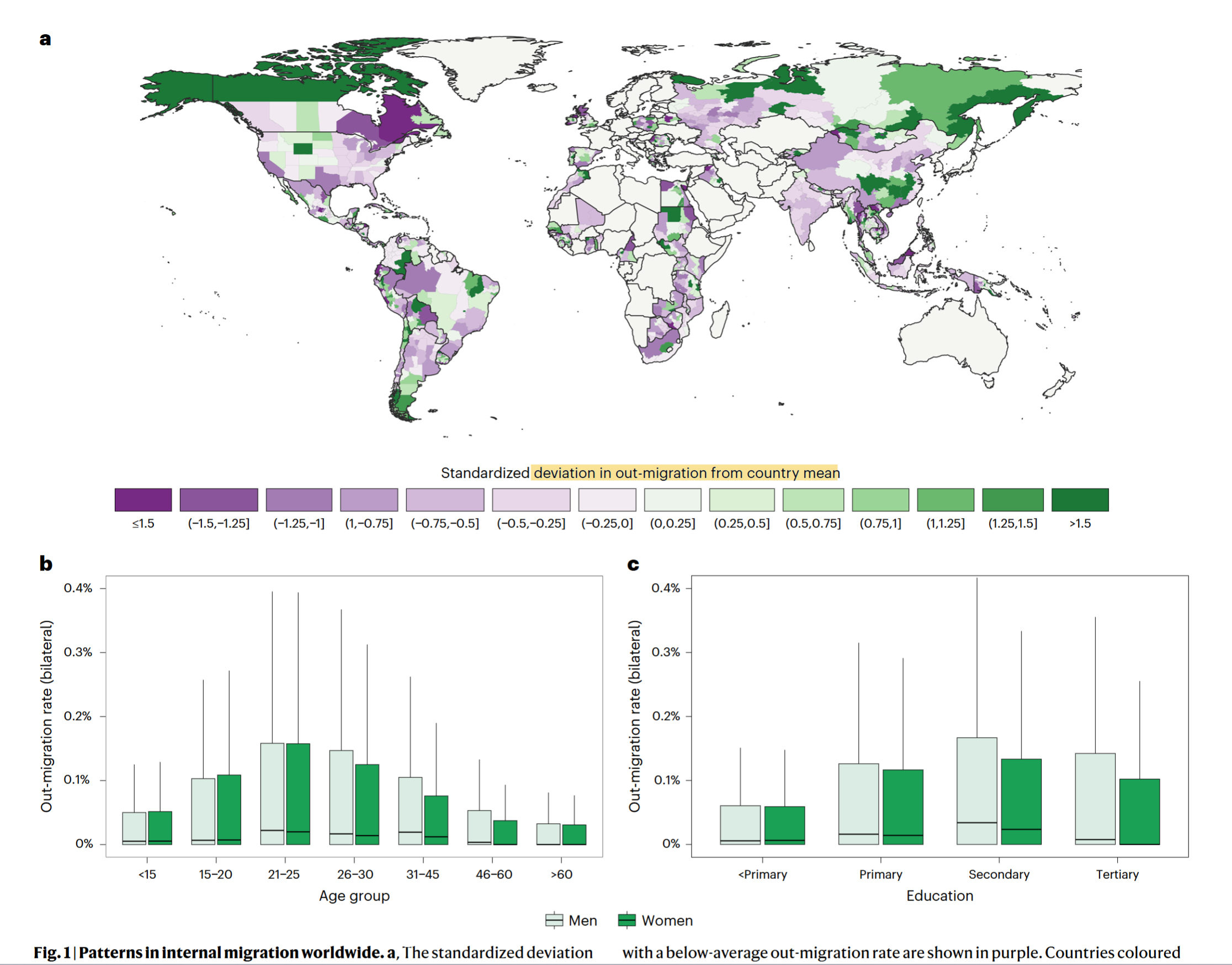
- Central China experiences higher out-migration, similarly in central US, Canada, Brazil, whereas lower levels of out-migration and higher immigration are observed in eastern coastal regions
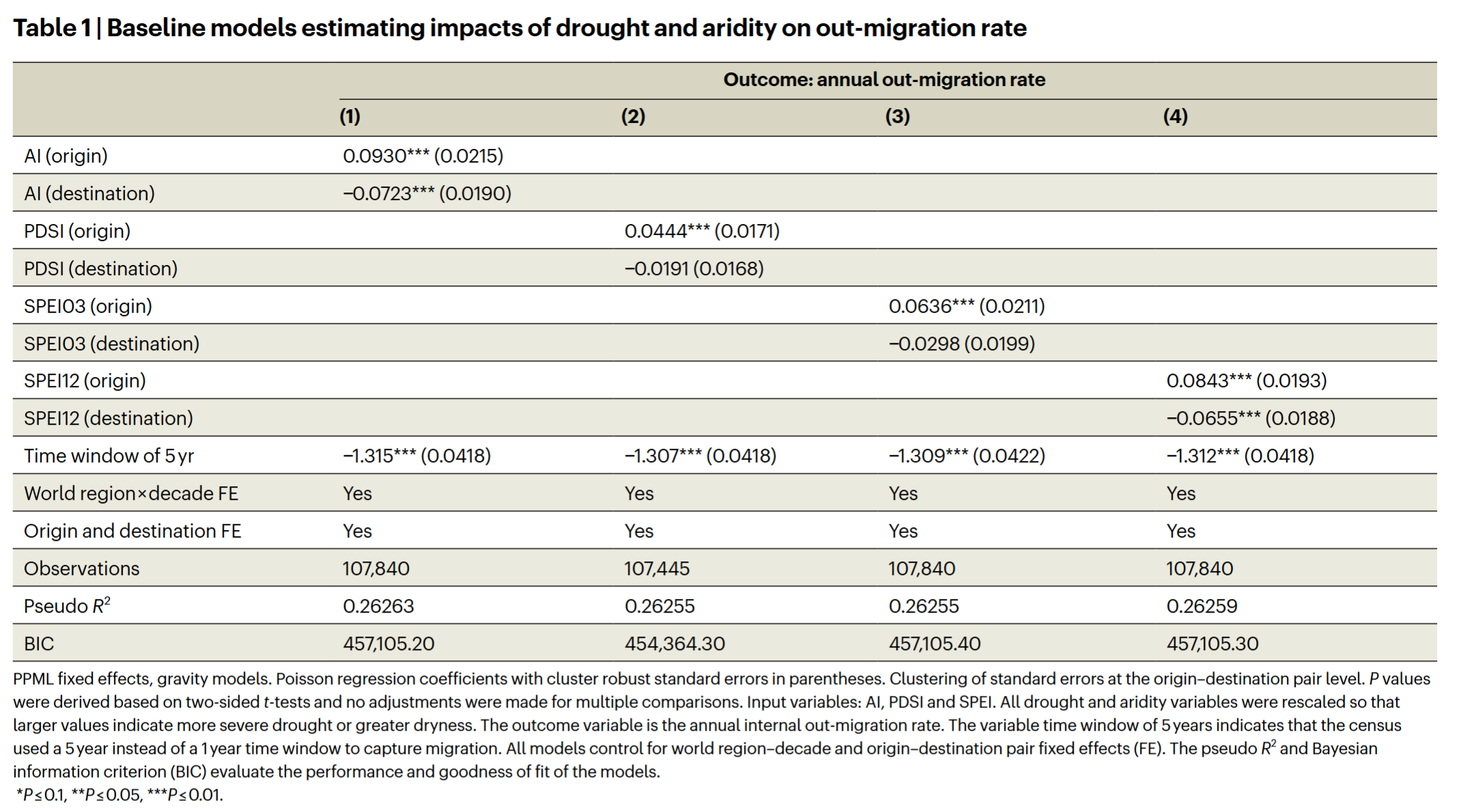
- Most internal migration is over short distance and between neighbouring regions
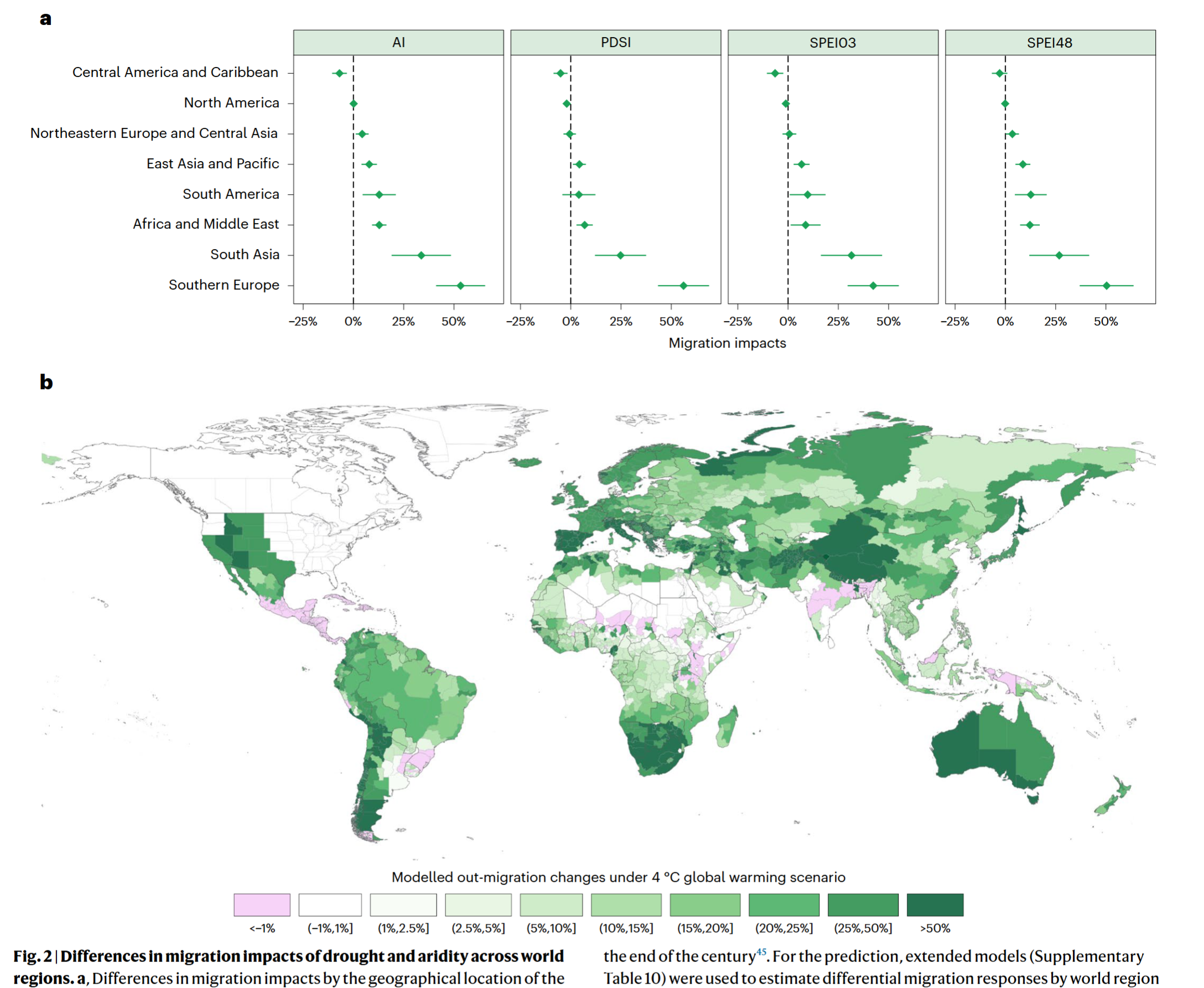
- Considerably higher migration to urban as opposed to rural areas
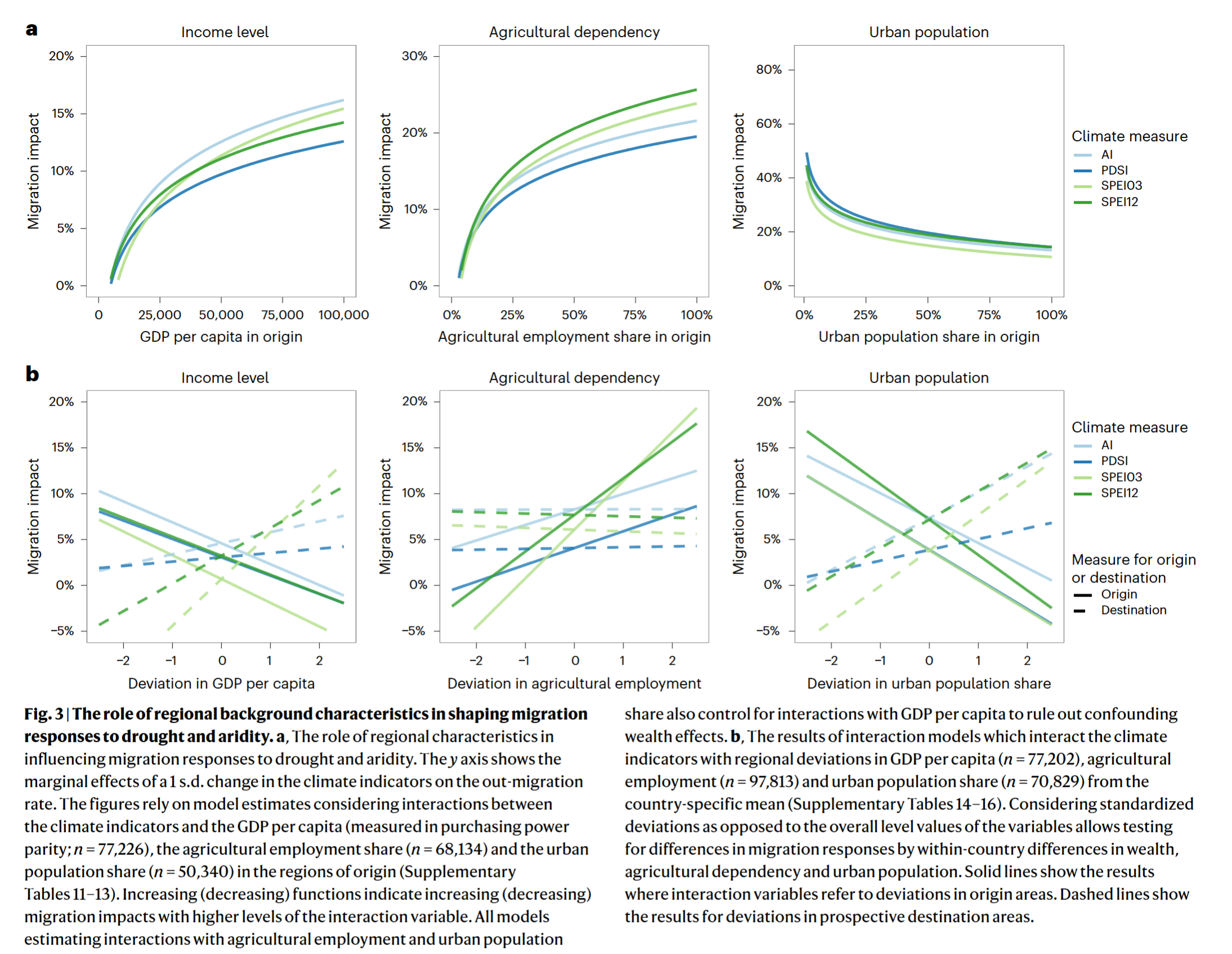
- Significant and sizeable effects of drought and aridity on migration; differential impacts over time; non-linear migration impacts with increasing environmental stree
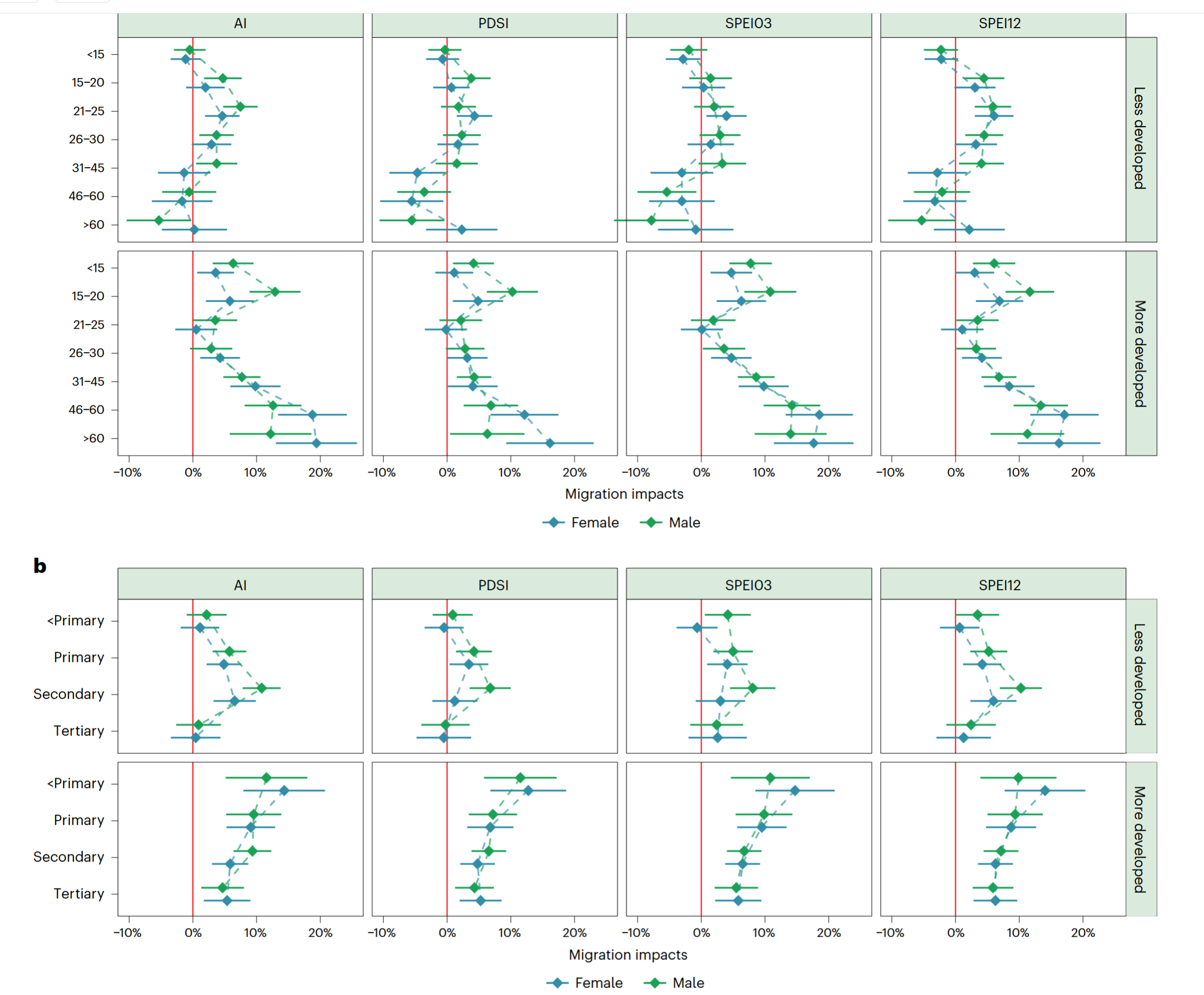
- Impacts are moderated by socioeconomic factors
Coding Reference:





